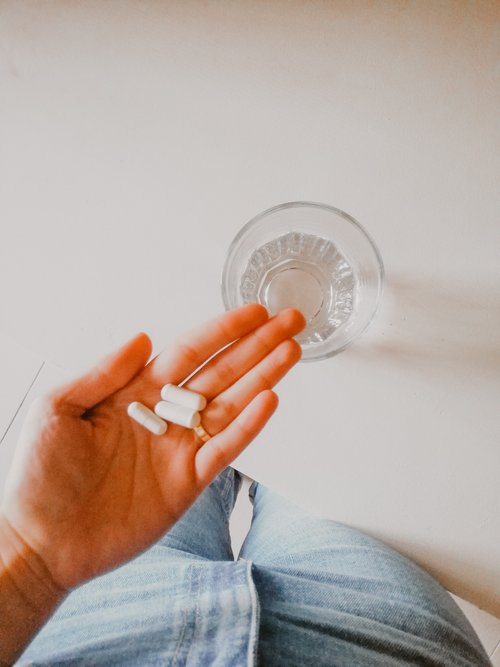WHY “SUPPLEMENTS”?
Arguably, the next thing to being alive is living a life of wellness. A life that enjoys bodily vitality and fitness; several wealthy people who were sick at a point in their lives had mentioned that they were willing to sacrifice all they had to get their health back. This goes to validate the popular maxim “health is wealth”. In our pursuit of bodily wellness, the nutrients we supply our body go a long way to either preserve our health or leave us exposed to disease-causing substances and organisms. However, this leaves us with a question. Does our conventional food supply us with all the nutrients our body needs in the right quantities? You may want to find out and perhaps discover how that supplements may be the elixir we’ve all been seeking to a life of wellness. What are supplements? From the name, they are products made to supplement one’s diet. They could be tablets, pills, capsules, syrup, or powder.¹ If you recall elementary science, we were taught that healthy nutrition consists of carbohydrates, proteins, fatty acids, minerals, and fiber in their right proportion. Conventionally, we get these nutrients into our body through food which means that we would solely rely on the food we eat to provide these nutrients in the right proportion. However, with centuries of land exploitation through overfarming alongside other environmental disturbances, there isn’t enough transfer of soil nutrients to crop plants in appropriate amounts. Imagine a beautiful bridge covering the gap between your body’s nutrient requirement and nutrient inadequacy in our foods due to depleted soil nutrients. We can conveniently call this bridge “supplements”! Supplements are vital to our health in many ways. I cannot wait to show you. The definition given by The Dietary Supplement Health and Education Act seems to give an encompassing answer. It defines dietary supplements as any product apart from tobacco that is meant to supplement a diet that contains one or more of the following: minerals, vitamins, an herb, or an amino acid. It is a substance used to increase total dietary intake by supplementing a diet.² Factors that may affect nutrition delivery of supplements The effectiveness of any supplement depends on how much of it was absorbed by the body. Some minerals need to be chelated to avoid absorption conflict when taken with other minerals. For instance, if you take magnesium and selenium supplements, your body’s uptake of copper minerals will be inhibited. However, calcium supplements rather reduced copper losses.³ That said, we may like to know when it is best to take supplements. Vitamins are best taken in the morning or during daylight while minerals are better absorbed overnight. What types of supplements are there? Supplements are administered in several ways, each peculiar one having its unique purpose. Those absorbed through the skin: This may sound interestingly strange and I understand why. When supplements are mentioned what comes to mind are pills, powders, capsules, or other forms of extracted food substances that have to be ingested. Aside from that, the skin is quite rigid in permeability such that the chemicals from our body lotions do not end up in our bloodstream. However, certain supplements can be passed from the skin into the bloodstream by making their molecules very small and dissolving them in fatty oils. In cases where these aren’t effective, sterile needles can be used to poke holes in the skin before supplements are introduced.⁴ We will not forget our old friend Vitamin D which is hardly ever required as an essential supplement because our skin mobilizes it on its own when it comes under sunlight. Those absorbed through the nose: the human nose has proven to be a potential route for the administration of drugs and supplements. It has a large surface area for quick delivery of substances into the bloodstream; it doesn’t involve the first-pass metabolism and in most cases secures your comfort.⁵ For instance, vitamin B12 which is required by our body for optimum red blood cell production and nervous system function⁶ most recently are being administered through the nose.⁷ Those inhaled: this is not anything like a cigarette! It is vaporized vitamins or essential oil-containing supplements. Although it was used as a therapy for people addicted to tobacco smoking, it is now being considered as a health-improving activity. A company producing vaporized vitamins claims that its vaporizer holds 10 times more Vitamin B-12 than you could obtain in a regular shot.⁸ Those digested: this is the most popular form of supplement intake where they are swallowed or eaten as you would do your food. They could be packaged as pills, capsules, or any ingestible material. What do we need supplements for? The hazard of nutritional deficiency is telling on many people, sadly, they are looking the wrong way for solutions. A research proved that poor or inadequate nutrition is one primary cause of the global sick rate.⁹ 5 out of 10 adults in the United States are suffering from chronic diseases that could have been prevented by healthier dietary patterns.¹⁰ This shows us how important food and feeding are to our health and the quality of life we live. When we talk about food, we cannot take our eyes from its source; the soil. For food to give us adequate nutrients for our wellbeing, the soil has to hold enough nutrients for the crop plants to take up. However, as reported by Peter et al., due to intense, mismanaged farming, soil nutrients, are becoming short of supply. Soil Nitrogen has reduced by 42%, sulfur by 33%, and phosphorus by 27%.¹¹ These reductions in soil nutrients affect the number of nutrients in our foods sometimes to levels below optimum to sustain good health. It will amaze you to know that even our favorite veggies no longer contain adequate quantities of magnesium; the magnesium content dropped by 25% in wheat and veggies in recent years.¹² The ultimate result of the depletion of soil nutrients is that our food will not provide adequate
WHY “SUPPLEMENTS”? Read More »






